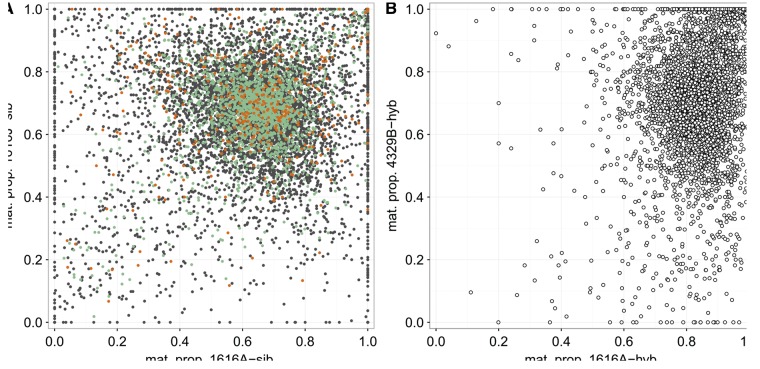Fig. 2.
Global patterns of parent-of-origin-specific maternal proportions in within-population vs. hybrid endosperm. (A) Endosperm maternal proportions for 8,229 genes in the reciprocal S. peruvianum crosses 1616A × 1616J (x axis) and 1616J × 1616A (y axis). Candidate MEGs have maternal proportions >0.833 in both directions of the cross (upper right sector), and candidate PEGs have maternal proportions <0.333 in both directions of the cross (lower left sector). Three classes of genes are distinguished by color: ASE information from only heterozygous SNPs (gray dots, n = 5,951), ASE information from only homozygous SNPs (orange dots, n = 383), and ASE information from both types of SNPs (green dots, n = 1,895). The 67 “complete” MEGs (mat. prop. >0.99) in the upper right corner cannot be adequately distinguished visually. (B) Endosperm maternal proportions for all 4,111 informative genes in the reciprocal hybrid crosses between 1616A (S. peruvianum) and 4329B (S. chilense). Note the marked shift toward higher maternal proportions in these hybrid endosperms, especially for 1616A in the maternal role (x axis, from median maternal proportion 0.646 in A to 0.843 in B).

